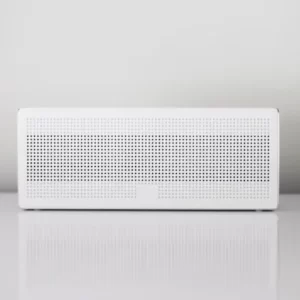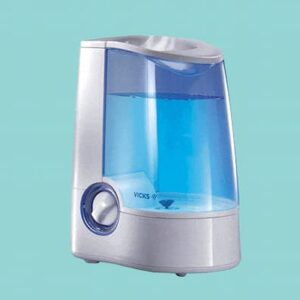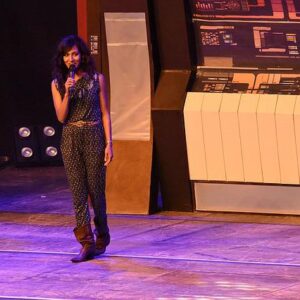Working with leather is frequently difficult, especially if it’s thick. However, sewing machines appear to work with leather much more easily and with much better outcomes.
Therefore, if you need to upgrade or repair leather items, you should think about purchasing a high-quality leather sewing machine.
What type of sewing machine should you buy for leather—a domestic or an industrial one? Also, can leather be sewn on a standard sewing machine?
In the sections that follow, I will address these inquiries for you. Then enumerate the best leather sewing machines.
The best leather sewing machines include: Brother ST371HD, Brother Sewing and Quilting Machine, CS6000i, SINGER Quantum Stylist 9960 Computerized Portable Sewing Machine…
Please continue reading so I can give you more specific information.
Table of Contents
The Best Sewing Machines For Leather Reviewed
Brother ST371HD

The Brother ST371HD should be at the top of your list if you’re looking for a less expensive sewing machine that can handle leather.
It’s not quite as robust as some of the more expensive, industrial machines on this list, but it’s still a great choice for beginners and people on a budget.
It is simple to use, excellent for sewing leather, and useful for other sewing tasks as well.
Pros
- Cheap
- Easy to use — automatic needle threader, jam resistant Quick Set drop-in top bobbin
- Brightly lit
- Smooth fabric feed
- Comes with heavyweight needles and 6 sewing feet
- Can handle multiple layers of lightweight fabric
- 37 built-in stitches
- Free arm
- Easy stitch selection
Cons
- Not particularly sturdy
- Not so good on multiple layers of heavyweight fabrics
Brother Sewing and Quilting Machine, CS6000i

The Brother CS60001 is one of the most affordable, feature-rich sewing machines available for sewing leather that is lightweight and portable. It gives you a computerized setup without any extraneous bloat. This machine offers a smooth start and continues to be sturdy until the end, making it perfect for both novice and experienced sewers.
Brother is renowned for its portable, user-friendly, and recognizable yet contemporary design. It is computerized and has a stitch selector with an easy-to-read LCD that can be seen through a piece of blue plastic.
Pros
- Easy Installation
- Large work area
- Automatic threading to save time
- Options for use of foot pedal
- Variety of stitches with length and width settings
Cons
- Poorly placed light
- Flimsy needles
SINGER Quantum Stylist 9960 Computerized Portable Sewing Machine

A popular machine for sewing leather is the Singer Quantum Stylist 9960. It includes a strong feed dog system, an extension table that comes in handy when working on larger projects, and an impressively smooth fabric feed.
You can computerize your sewing process, and the product is appealing. It has a number of features that are very important for sewing leather. You can be as imaginative as you like thanks to the numerous editing and customization options.
Pros
- Ideal for clothes making
- 600 in-built stitches
- Extension table
- Comes with lots of accessories
- Computerized digital information advisor
Cons
- Unsuitable for beginners
- Customer service needs revision
SINGER 4423 Sewing Machine

For both amateur and professional users, the Singer 4423 is a budget-friendly yet reliable option. It’s a fantastic tool for new users or those on a tight budget. When it comes to performance, it is a real workhorse. It has a powerful motor with incredible piercing ability.
It’s simple and quick to sew thick seams. This sewing machine embodies the distinctive Singer style with a clever design and superb quality that might surprise and satisfy even seasoned sewers.
Regardless of your stitching skill level, whether it be for new projects or alterations to clothing. There are some adaptable and simple-to-use sewing accessories included. It delivers excellent results and is automatic, making users happy.
Pros
- Ultra-fast stitching -1,100 SPM
- Durable
- Affordable
- Accessory tray
- Free arm
Cons
- Ineffective on multiple layers
- Lightweight therefore not sturdy
- Motor is loud
SINGER Heavy Duty 4452 Sewing Machine

One of the top Singer products on the market is the Heavy Duty 4452. It is simple to set up and use, and because it sews quickly and effectively, it is perfect for heavy fabrics like leather. For both novice and seasoned saw users, it works well. It can easily pass through denim and canvas in addition to leather.
It has an adjustable presser foot pressure that works well when sewing lightweight materials as well. Even though it appears to be quite straightforward, it can serve you very effectively and avoids confusing you with a variety of features. With its numerous heavy-duty accessories and fast stitching, it gives you versatility and makes up for any shortcomings.
Pros
- Maximum sewing speed
- Ideal for thick fabrics
- Easy to use
- Runs smoothly
- Time saving automatic needle threader
Cons
- Foot pedal is a hindrance
- Not as “heavy-duty” as some expect
- Plastic is heavily used in manufacturing
- Thread tension issues
Singer 9960 Quantum Stylist

In our opinion, the Singer 9960 Quantum Stylist is the best-rounded sewing machine on the market right now, and it is particularly good for sewing leather.
Despite not being a dedicated heavy duty sewing machine like the others on our list, this one is well suited for handling leather thanks to its impressively smooth fabric feed, sturdy feed dogs, and extension table for bigger projects.
The best sewing machine for clothing creation—which many of you who work with leather will be doing—is the 9960 Quantum Stylist. It also has a ton of simple-to-use features, a whopping 600 built-in stitches, and a ton of editing and customization options.
Pros
- Ideal for clothes making
- 600 in-built stitches (including 13 auto 1-step buttonholes and 5 fonts)
- Automatic needle threader, thread cutter, bobbin winding, stitch size adjuster
- Top drop-in bobbin system
- Extension table
- Needle up/down button
- Comes with lots of accessories
- Computerized digital information advisor
- Electronic auto pilot to sew without foot pedal
- Speed control lever
- Very bright workspace
- Great on leather and denim
Cons
- There might be too many features for people who want a simple leather sewing machine
- Singer customer service leaves a little to be desired
Janome HD1000

A heavy-duty sewing machine with professional-grade features and a mid-range price is the Janome HD1000. Although the variety of features makes it slightly more expensive, you can use your creativity while taking advantage of the many advantages.
This machine, which is entirely mechanical, is simple to set up and operate. It can be quickly turned on by pressing a button or pulling a lever. The options that are easy to use, such as the automatic needle-threader and the many built-in stitches. make it an easy machine to use while the oversized table is ideal for professionals who work with larger fabrics like leather.
Pros
- Versatile
- Additional accessories
- Automatic needle-threader
- Best for heavy fabrics
Cons
- No automatic thread tension control
- Heavy in weight
Janome HD3000 Sewing Machine

The HD3000 from Janome, known for their high-quality sewing machines, is the ideal combination of a home and business leather sewing machine.
With an automatic needle threader and a top-loading bobbin system that prevents jams, it is incredibly simple to use while also being incredibly efficient on heavy duty fabrics, especially medium weight leathers.
Pros
- Easy to use — automatic needle threader and jam-proof bobbin
- 18 in-built stitches
- Easy stitch selection
- Adjustable presser foot pressure
- Free arm
- Comes with lots of accessories
- Excellent stitch quality
- Can sew through multiple layers
- Can easily handle leather and heavy duty fabrics
- Works quietly
Cons
- Heavy, not portable
- Not so good on lightweight fabrics
Sailrite Heavy-Duty Ultrafeed LSZ-1

Only one industrial leather sewing machine, the Sailrite Heavy-Duty Ultrafeed LSZ-1, is featured on our list. Even though it is pricey, it is unrivaled for materials that require a lot of strength.
It goes without saying that this is not the machine for someone looking to poodle around on something at home. It is intended for sewing enthusiasts who need a machine that can work at high speeds with heavy fabrics like leather and other heavy duty fabrics without tiring out.
The patented Posi-Pin clutching system, which we believe puts all other feed dogs to shame, is without a doubt its most notable feature. Strong, even, and smooth stitching is possible because of how easily it grips the material.
The Sailrite LSZ-1 also features an extra-wide presser foot and a high lift for sewing through up to 10 layers of thick canvas, making it ideal for heavy-duty materials.
Pros
- Incredible strength and accuracy
- Can handle multiple layers of heavyweight fabric with ease
- Great for sewing leather saddles
- Steel balance wheel — twice the size and power of traditional balance wheel
- Zigzag or straight stitch
- Extra wide presser foot
- Variable stitch length and width
- Personalized customer support
- Variable speed control
- Hand crank for when there’s no electricity
Cons
- Expensive
- May be a little overwhelming if you only need it for leather sewing
Any Sewing Machine Can Sew Leather, Right?
Many sewers who want to sew leather wonder whether they should purchase an additional machine. Isn’t it possible to stitch leather together with a standard sewing machine, just like you would fabric? This query is divided into two parts.
First off, a standard home sewing machine can technically be used to sew leather.
All you need is a strong enough needle, the right thread, and the right foot. You can stitch the majority of leather types quickly once you have these things in place.
This brings us to the second aspect, the type and thickness of the leather.
Snake leather is only 0.3 millimeters thick, while Bridle hide is 7 millimeters thick. Consequently, you also need to consider the type of leather.
A typical home sewing machine can cut leather that is 1 mm or thinner. It would be even better if you still had an older pure mechanical device. If you want to sew on thicker leather, you’d probably need to buy a heavy-duty machine.
You would likely need to spend money on an industrial machine like a flatbed machine for upholstery and leather that is 5 mm or thicker. Work on leather goods like belts, wallets, straps, and leather jackets is done on these machines in an industrial setting.
Before making a decision to purchase a sewing machine, therefore, review the product specifications and confirm the type and thickness of the leather.
See our related articles:
A Buyer’s Guide For The Best Leather Sewing Machine
Let’s examine what you should look for when buying a sewing machine now that you are aware of the type to purchase.
To make the process uncomplicated, here are the things to inspect when buying a sewing machine for leather:
The Type
You should first look into the type of sewing machine. That’s because it has an impact on both the price and functionality.
You should take into account heavy-duty, computerized, and industrial sewing machines in addition to a standard home sewing machine. The cylindrical arm, flatbed, and post bed are the three types you’ll find in industrial units.
Of course, the kind depends on your preferences, level of expertise, and financial situation. So choose wisely.
Feed Mechanism
The feed mechanism is what you should investigate next. This is what feeds and pulls the material into the machine so the needle can pierce it.
Choose the compound feet from among the three most popular types of feed mechanisms, which include drop feed/regular feed and needle feed. In order to keep the leather from shifting while being stitched, it maintains the necessary downward pressure on the material.
Necessary Components
Teflon feet, bonded nylon thread, and a diamond point needle should all be included in any sewing machine, regardless of the type.
Even though you can always buy them later, it’s best if they come with the unit. It would imply that using the sewing machine on leather is ideal.
Maximum Sewing Thickness
The amount of fabric that can be sewn by modern machines, particularly those intended for home use, is constrained. Some units are designed to handle up to ¼”. Even when using a strong needle, they cannot handle thicker materials.
Similar to this, there are sewing machines that can stitch saddles up to 1″ thick. Look into its maximum sewing thickness capacity as a result.
Thread Sizes
The largest thread size that sewing machines can handle is a limitation similar to thickness. While some units can operate with thread sizes up to 277, others are only intended for smaller threads.
The majority of heavy-duty sewing machines can handle thread sizes up to 415. They are advised for sewing leather because of this.
Needle Sizes
You should also think about the largest possible needle size. Heavy-duty machines can sew with most types of leather using needle sizes up to 27. Domestic sewing machines, on the other hand, are only capable of using thread sizes 20 or 22. These might not be sufficient.
You should focus on the top leather sewing machine to purchase based on the aforementioned factors.
Related Questions
I Need What To Sew Leather, What?
The proper kind of needle is necessary when sewing leather, in addition to a sewing machine that can handle leather.
For sewing leather, a universal needle is not the best option; instead, you need a leather needle that is specially designed to “cut” through the leather.
How Big Of A Needle Should I Use To Sew Leather?
Depending on your sewing machine and the thickness of the leather you’ll be sewing, you’ll need to choose the appropriate needle size.
Sizes of leather needles range from 70/10 to 110/18.
Can Leather Be Sewn On Regular Sewing Machines?
The leather might stick, the feed dog might mark the leather, or the needle might break if you try to sew leather on a regular sewing machine.
This is frequently caused by the inability of a standard sewing machine to feed the needle and thread through the leather.
How Do I Sew Leather? What Kind Of Sewing Machine Do I Need?
A heavy duty sewing machine is ideal for sewing leather because it has stronger motors and can pierce leather skins more easily thanks to a special leather needle.
How Much Is A Leather Sewing Machine?
Machines used to sew leather are very expensive. These options are priced between $150 and $650.
A highly specialized industrial leather sewing machine from one of the more well-known industrial brands will cost you over $1500.
Do I Need A Walking Foot To Sew Leather?
No, a walking foot is not required to sew leather, but it does make the process simpler.
At the very least, you should think about using a non-stick or teflon foot and feed dog; these can be found for industrial machines and work well. This will help to reduce sticking and marking of your leather.
Domestic Vs Industrial Machines For Sewing Leather
Simply put: domestic machines have smaller engines and weaker needles, but they cater to more fabrics, whereas industrial machines are created for durability, but are designed with specific fabrics in mind.
What does that mean?
Well, if you’re working with thin leathers, such as those used for lighter jackets and wallets, you might want to think about a home machine.
You should lean toward an industrial machine if you’re working with tough leathers, such as those used for chaps and holsters.
Analyzing the engine descriptions of each sewing machine can help you distinguish between industrial and domestic models. If the engine is described in amps, the machine is probably domestic; if the description mentions horsepower, the machine is probably industrial.
Because they were designed for factory use, which entails continuous sewing, industrial machines are typically bigger and faster.
A domestic home sewing machine is typically smaller for storage and leisure use, so they can be started and stopped to adjust pin placement.
If you’re familiar with sewing machines, you might also notice that the leather industrial machine is probably larger so that it can work through thicker materials with a specialized leather needle.





